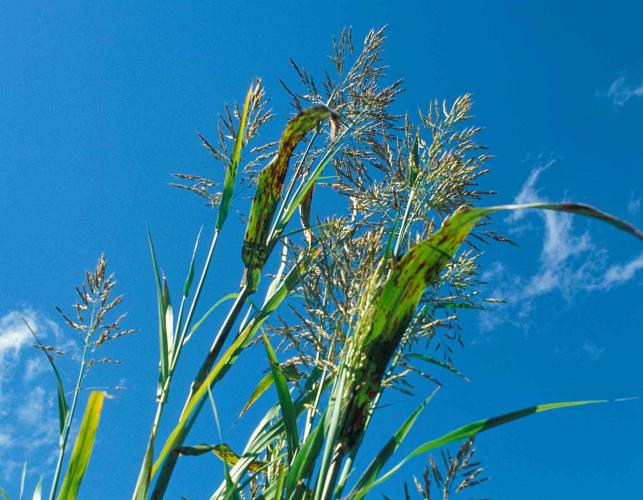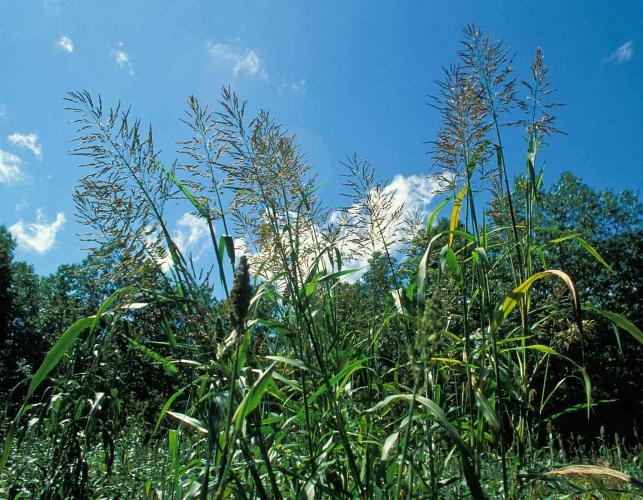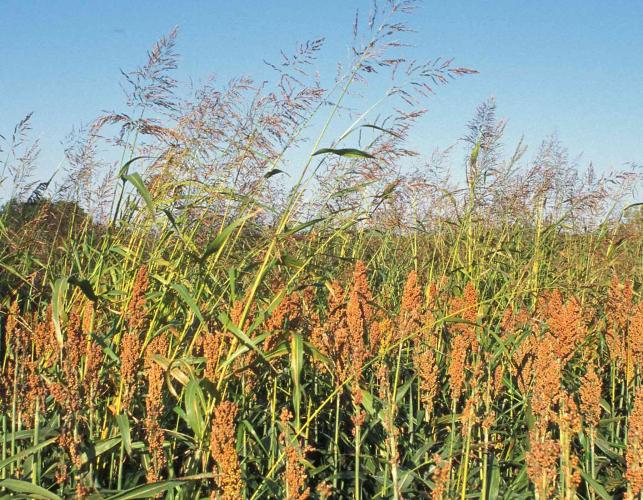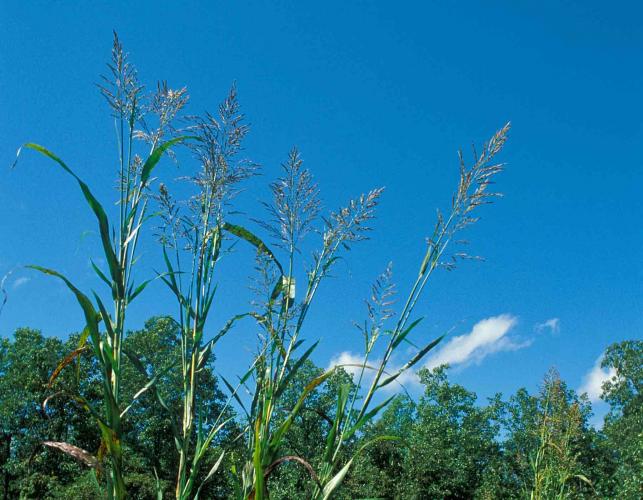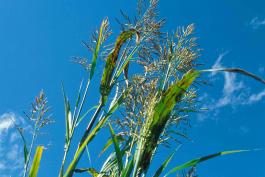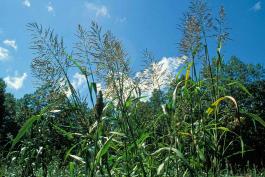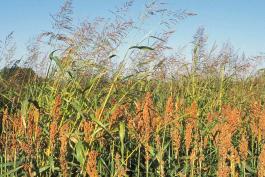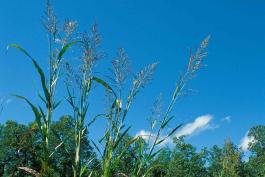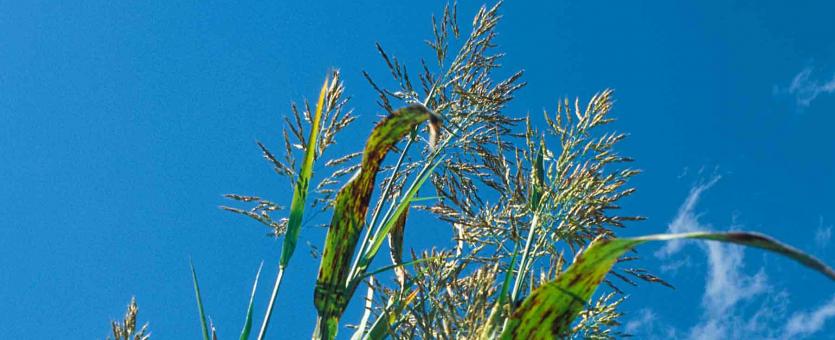
A tall, coarse, perennial grass with stout rhizomes. It grows in dense clumps or nearly solid stands. Leaves are smooth, 6–20 inches long, and have a white or light green midvein. Stems are pink to rusty red near the base. Panicles (flower clusters) are large, loosely branched, purplish, and hairy. Spikelets (the small flowering units) occur in pairs or threes, and each has a conspicuous awn. Seeds are reddish-brown and nearly ⅛ inch long. Blooms June through November.
Similar species: Two native grasses resemble Johnson grass. The stems of gama grass (Tripsacum dactyloides) are usually flattened at the base, whereas Johnson grass stems are rounded. Silver plume grass (Erianthus alopecuroides) has long silky hairs on the upper surface of its leaves where the leaves meet the stem, while Johnson grass leaves are smooth.
Height: to 8 feet.
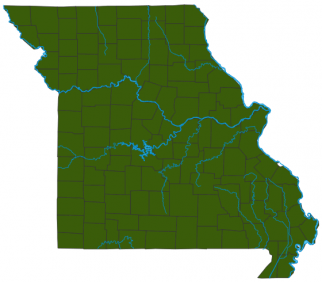
Statewide. Heavy infestations are found in all the major river bottoms of Missouri.
Habitat and Conservation
Occurs in crop fields, pastures, abandoned fields, rights-of-way, and forest edges and along stream banks. It thrives in open, disturbed, rich bottom ground, particularly in cultivated fields. Native of the Mediterranean, this grass now occurs in warm-temperate regions worldwide, including the tropical Americas, and is common in the southern United States.
Status
Invasive. The dense clumps of this very aggressive, perennial grass spread by seed and rhizomes to form nearly pure stands. A single plant may produce more than 80,000 seeds per year. Rhizome cuttings commonly form new plants, making it very difficult to eradicate. It spreads rapidly and is not affected by many of the agricultural herbicides.
Life Cycle
The thick rhizomes overwinter and in spring send out white, spurlike shoots. In clay and sandy loam soils, most of the rhizomes are in the top 4-6 inches of soil, but where there are cracks in the earth, rhizomes may grow to a depth of 10-20 inches. The leaves emerge late in spring, and seeds form by July. Stems and leaves die back after the first frost, but the dead litter often covers the ground all winter.
Control
Human Connections
Heavy infestations in river bottoms can reduce corn or soybean yields in Missouri to a few bushels per acre. More than 300,000 acres are infested in the Missouri Bootheel alone.
Ecosystem Connections
Johnson grass invades riverbank communities, fallow fields, glades, prairies, savannas, and forest edges, where it crowds out native species. It quickly dominates the herbaceous flora and reduces plant diversity.
